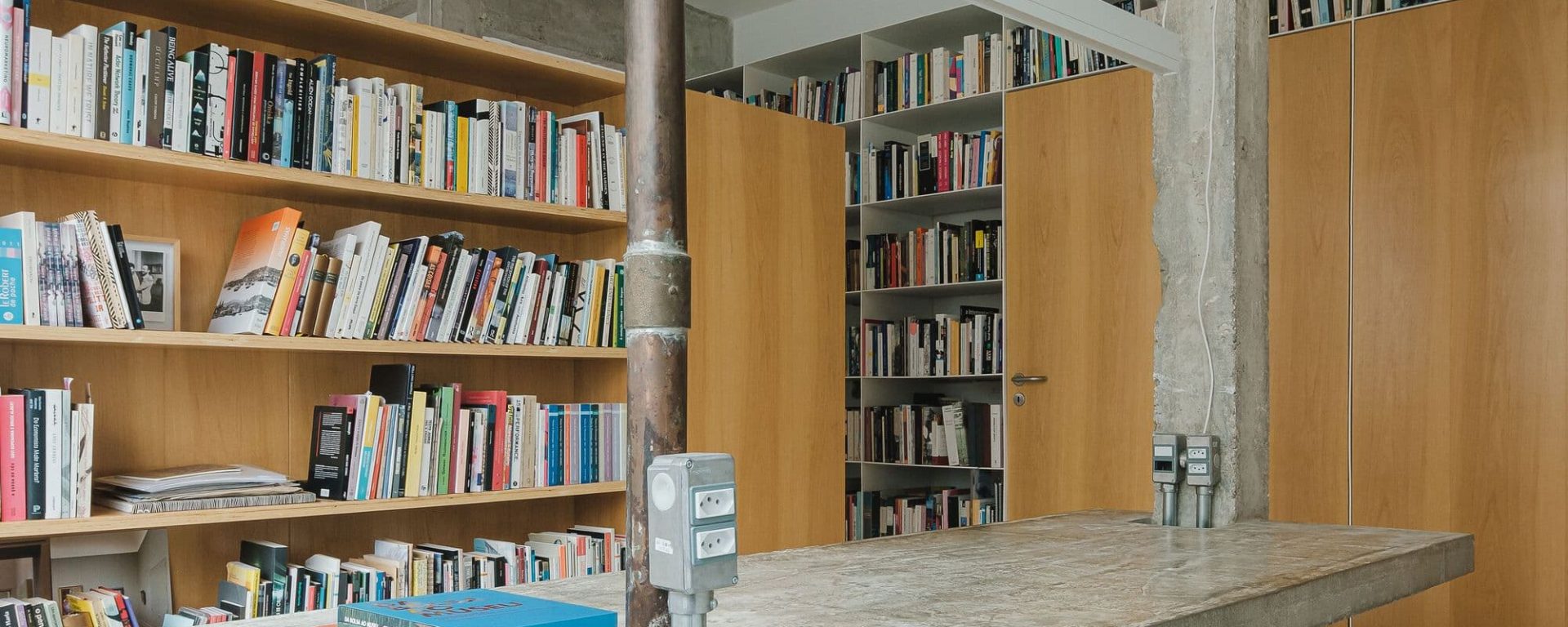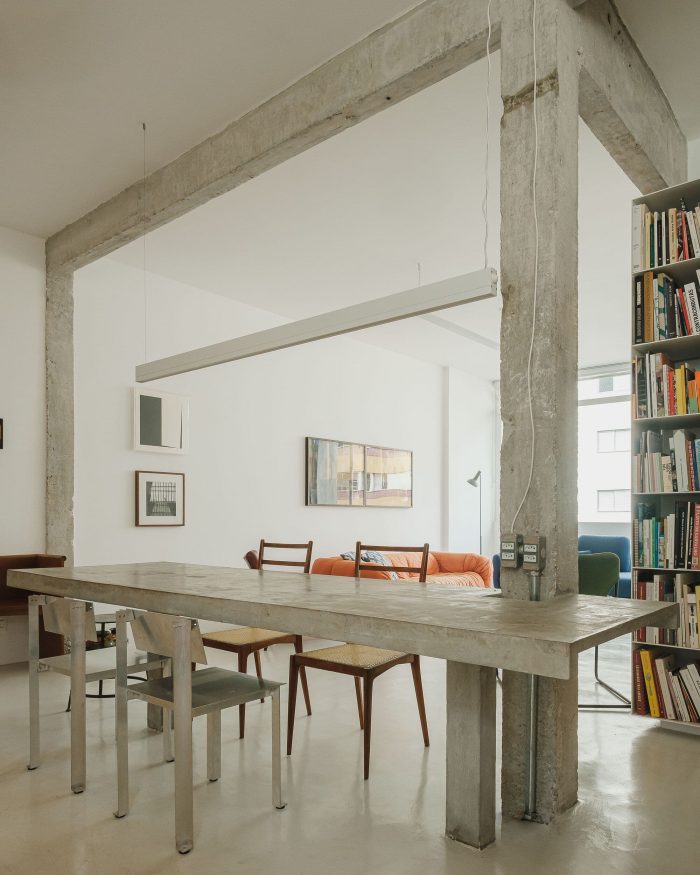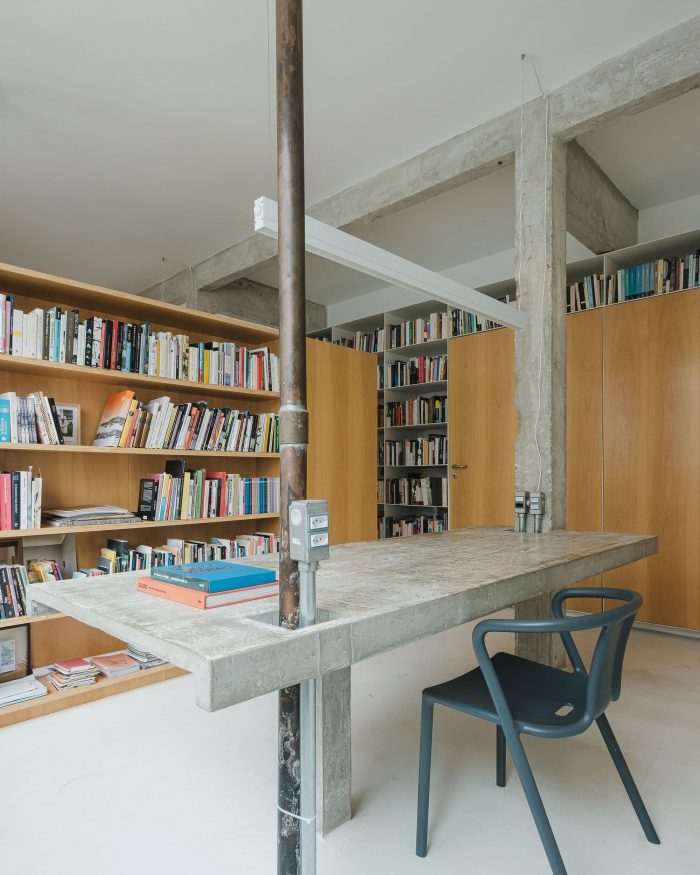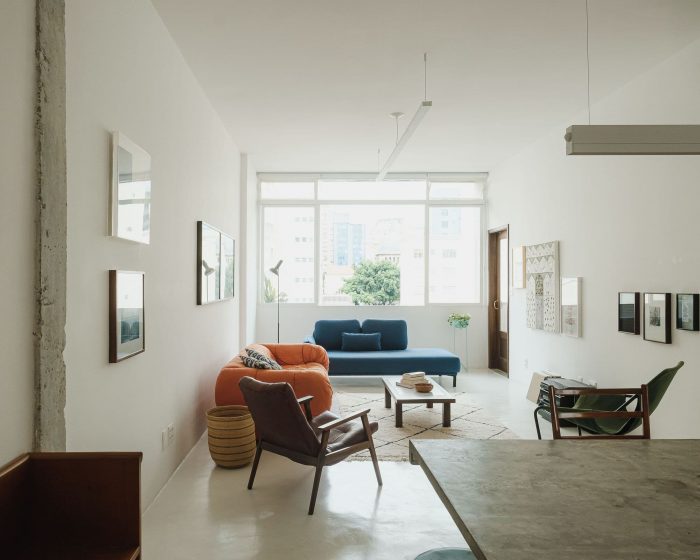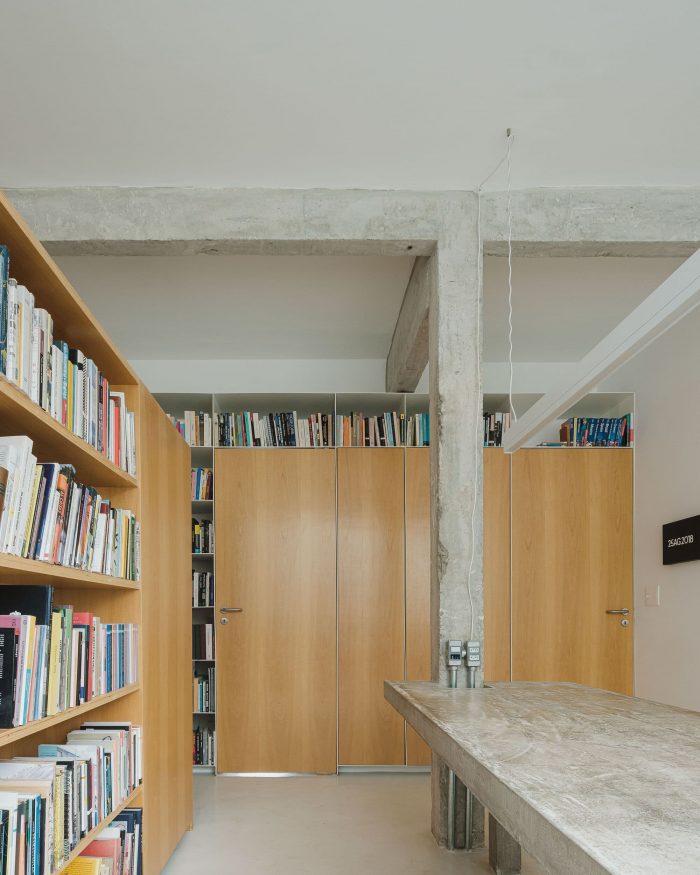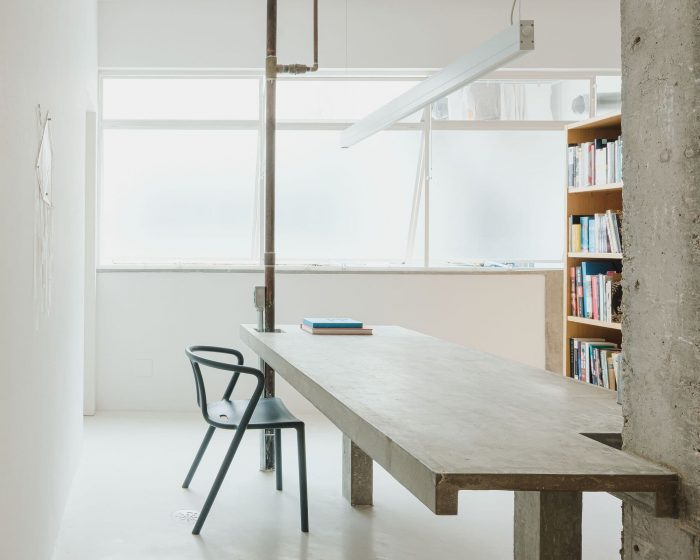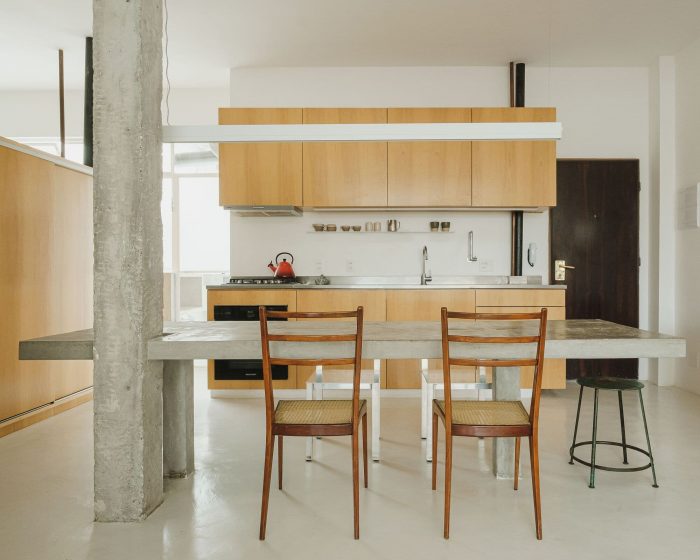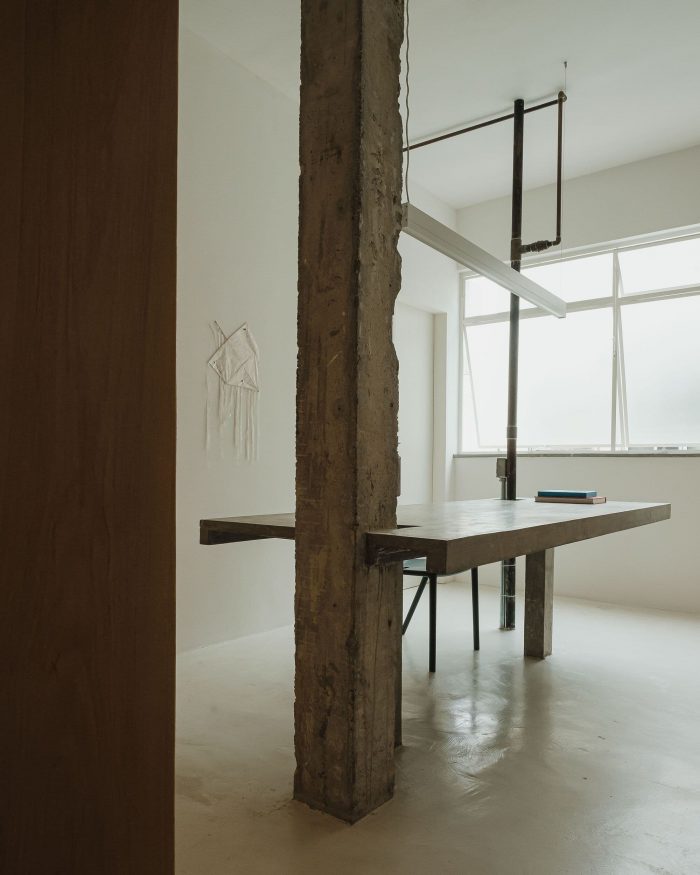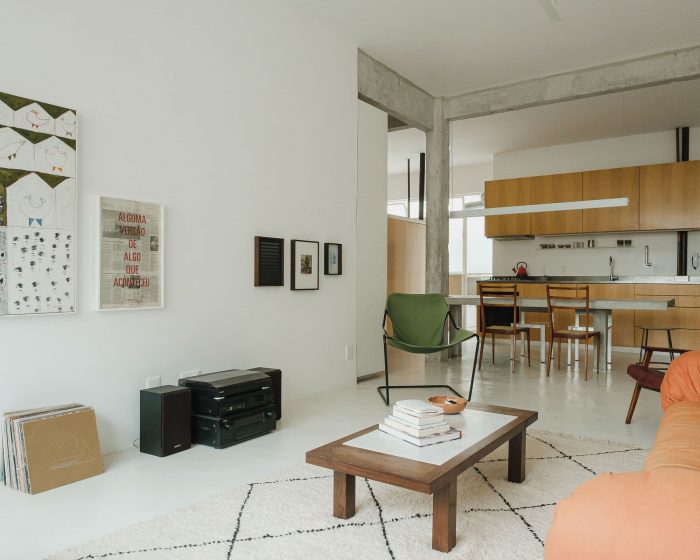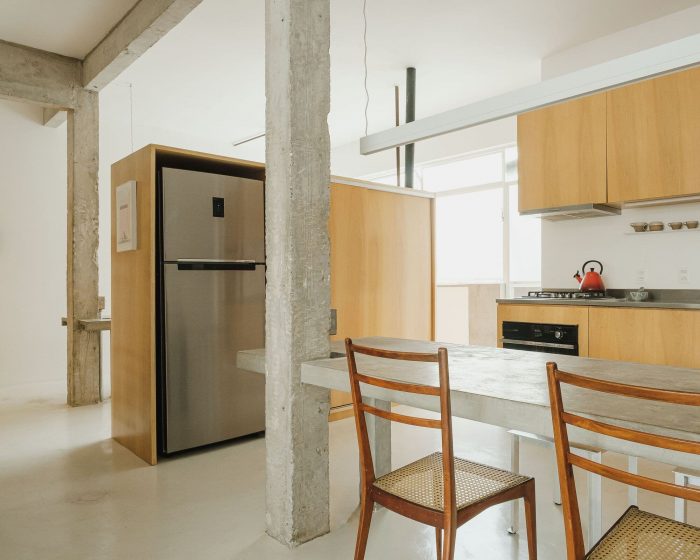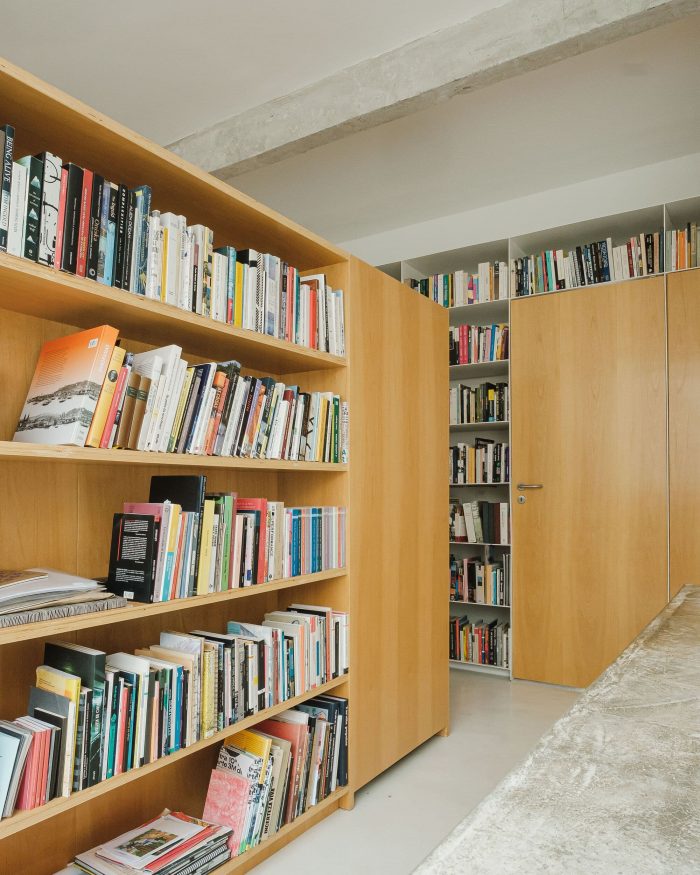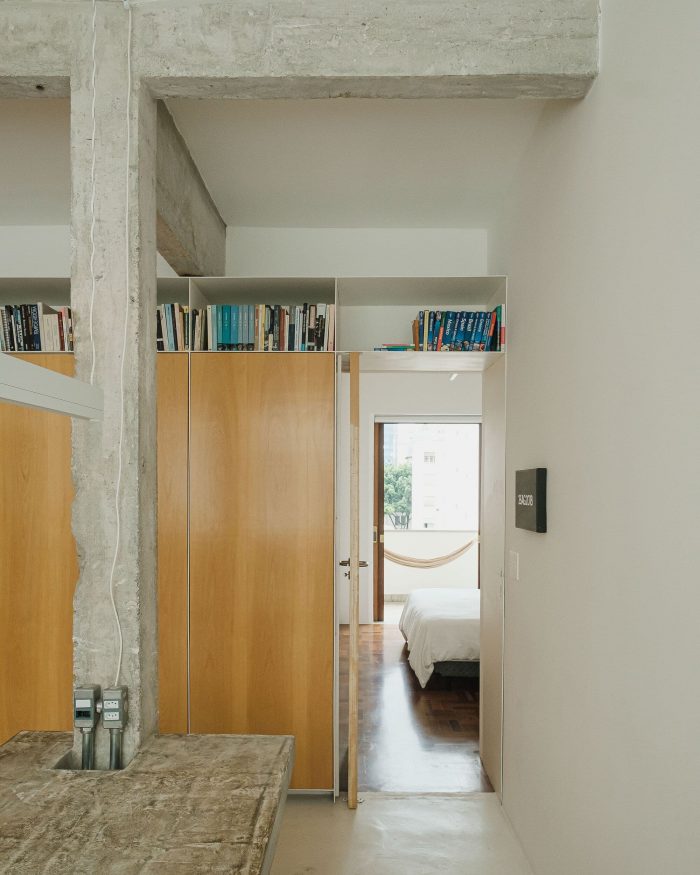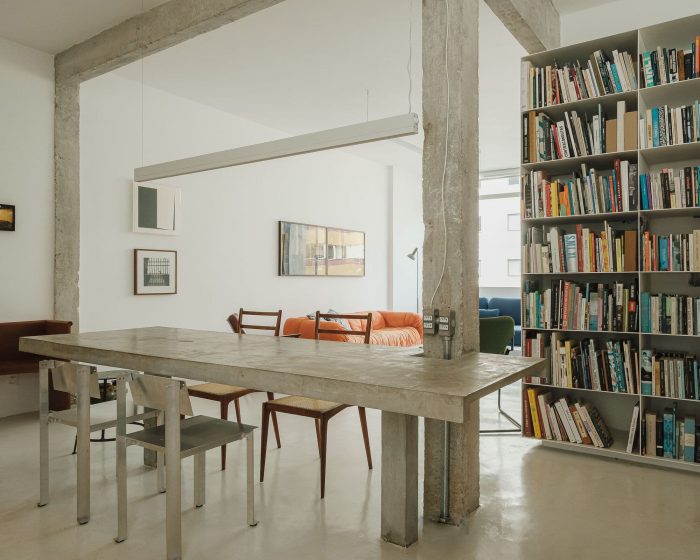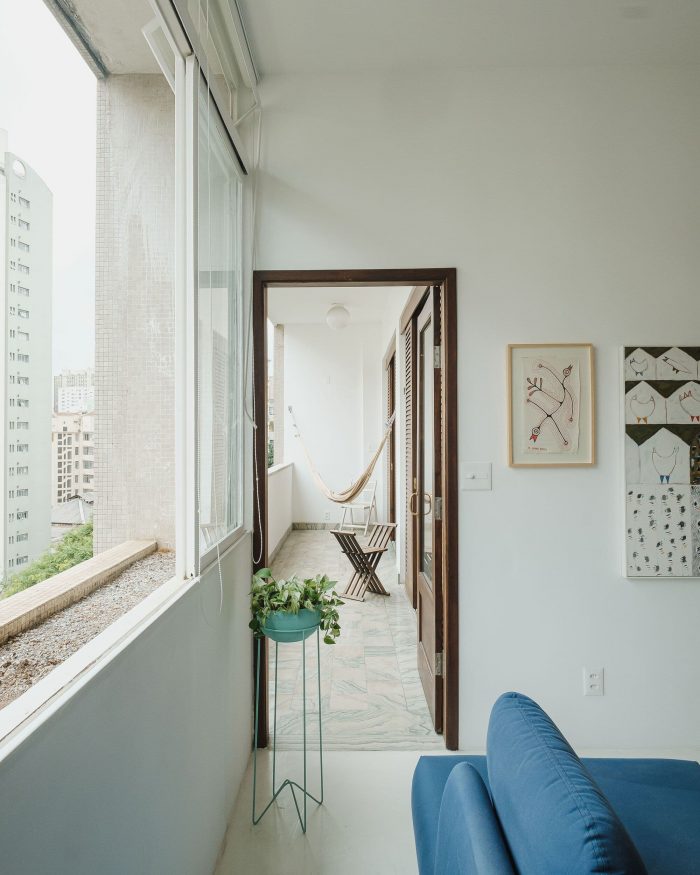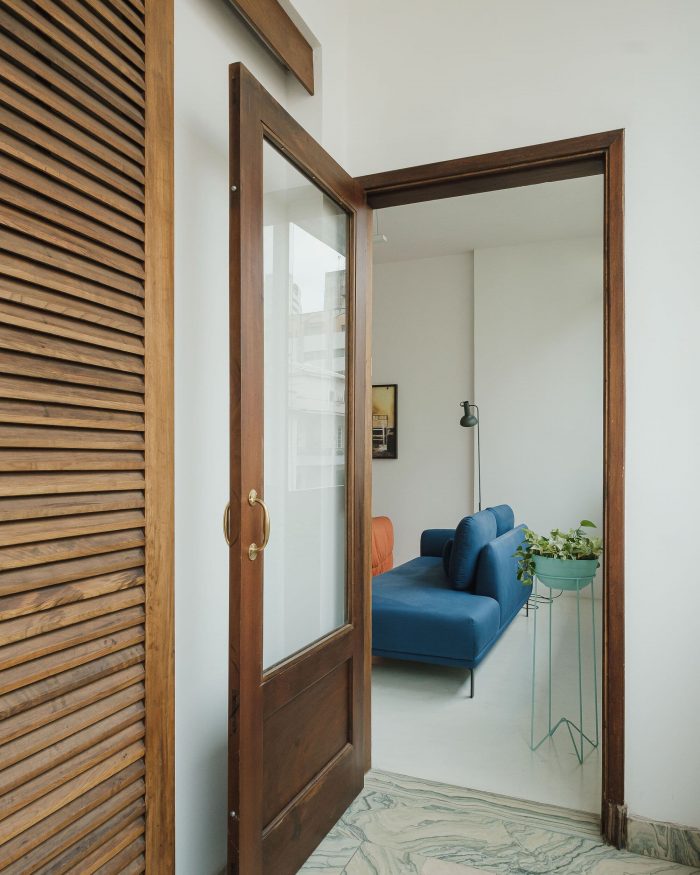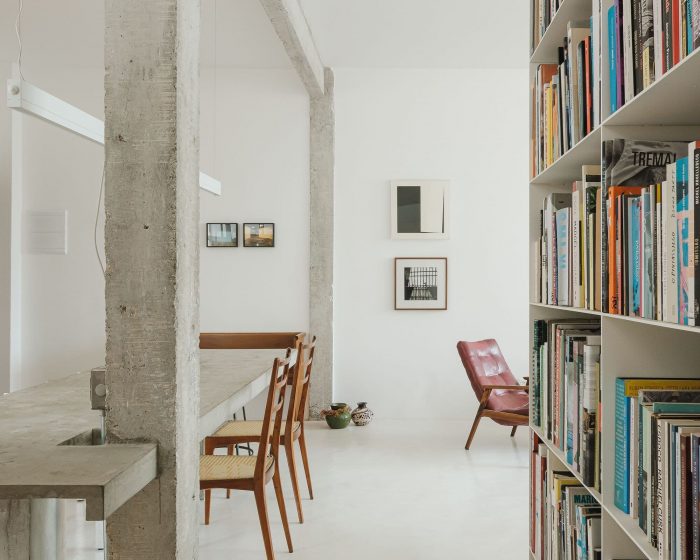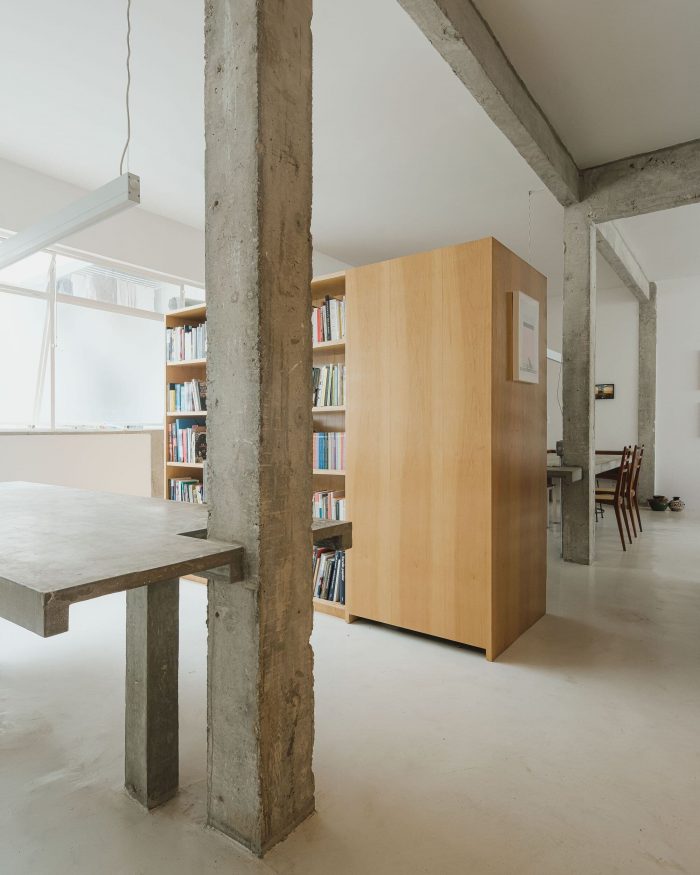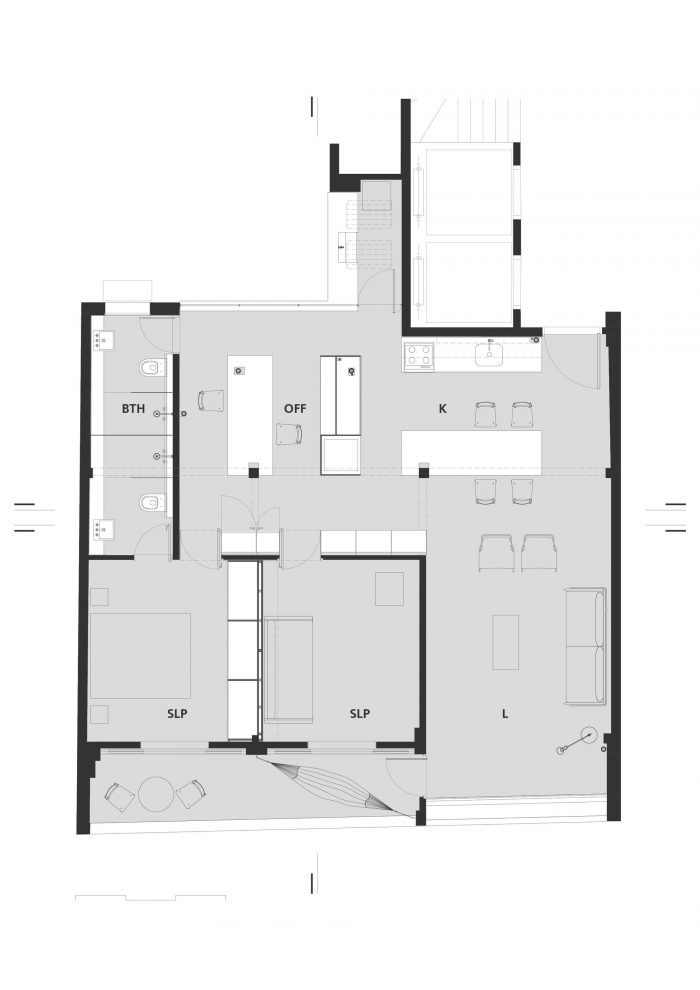对于这个公寓的翻新项目,建筑工作包括揭示一个已经存在但不可见的空间。因此,拆除墙壁、门和地板,意味着释放出所需的空间。
For this apartment renovation project, the architectural exercise consisted of revealing a space that already existed but was not visible. Demolishing walls, doors, and floors, therefore, means freeing up that desired space.
该改造项目是为一对年轻夫妇设计的,该建筑位于圣保罗市中心的圣塞西利亚附近,建于1980年代。这个单元位于大楼的最高层,有大量的自然光可用,这意味着设计行动需要尽可能地暴露内部空间。在这个意义上,以前位于公寓中心区域的浴室被拆除并重新定位。一些被分割和隔离的房间,如走廊和员工的区域,为一个集居住、厨房和办公于一体的大型多用途空间提供了空间。
The renovation was designed to accommodate a young couple in a building located in the neighborhood of Santa Cecília, São Paulo’s downtown, built in the 1980s. The fact that this unit is located on the highest floor of the building, with a lot of natural light available, meant that the design actions would require exposing the internal spaces as much as possible. In this sense, the bathrooms, previously located in the central area of the apartment, were demolished and repositioned. Some compartmentalized and segregated rooms, such as hallways and areas for employees, provide room for a large multiple-use space that combines living, kitchen, and office.
一旦露出来,这个空间就被符合不同环境的家具填满了。一个低矮的木柜将办公室和厨房分开,现在从建筑内部接受自然光。由清水混凝土制成的固定桌子,与现有的柱子和雨水管有关,被处理掉以组织流通。一个新的书架,带有细长的钢架和木门,容纳了一个丰富的图书馆,它是这个家的核心,向办公室和部分用餐区开放。
Once revealed, this space was filled with furniture that qualified for the different environments. A low wooden cabinet separates the office and kitchen, now receiving natural light from the interior of the building. Fixed tables made of fair-faced reinforced concrete, associated with existing pillars and rainwater pipes, were disposed of to organize circulation. A new bookshelf, with slender steel shelves and wooden doors, houses a rich library, the heart of the home, which opens towards the office and part of the dining area.
卧室和阳台保持了原来的形式,包括木头和石头地板。在其他空间,连续的单体白色水泥地板增强了自然光的质量。
Bedrooms and balconies have been kept in their original form, including the wood and stone floors. In the other spaces, the continuous monolithic white cement floor enhances the qualities of natural light.
Architects: JPG ARQ
Area : 106 m²
Year : 2020
Photographs :Pedro Kok
Architect In Charge : José Paulo Gouvêa
Team : José Paulo Gouvêa, Felipe Suzuki Ursini, Gabriel Hirata, Laura Sayuri de Haro, Nathieli Ricardo e Clara Garcia
Country : Brazil

